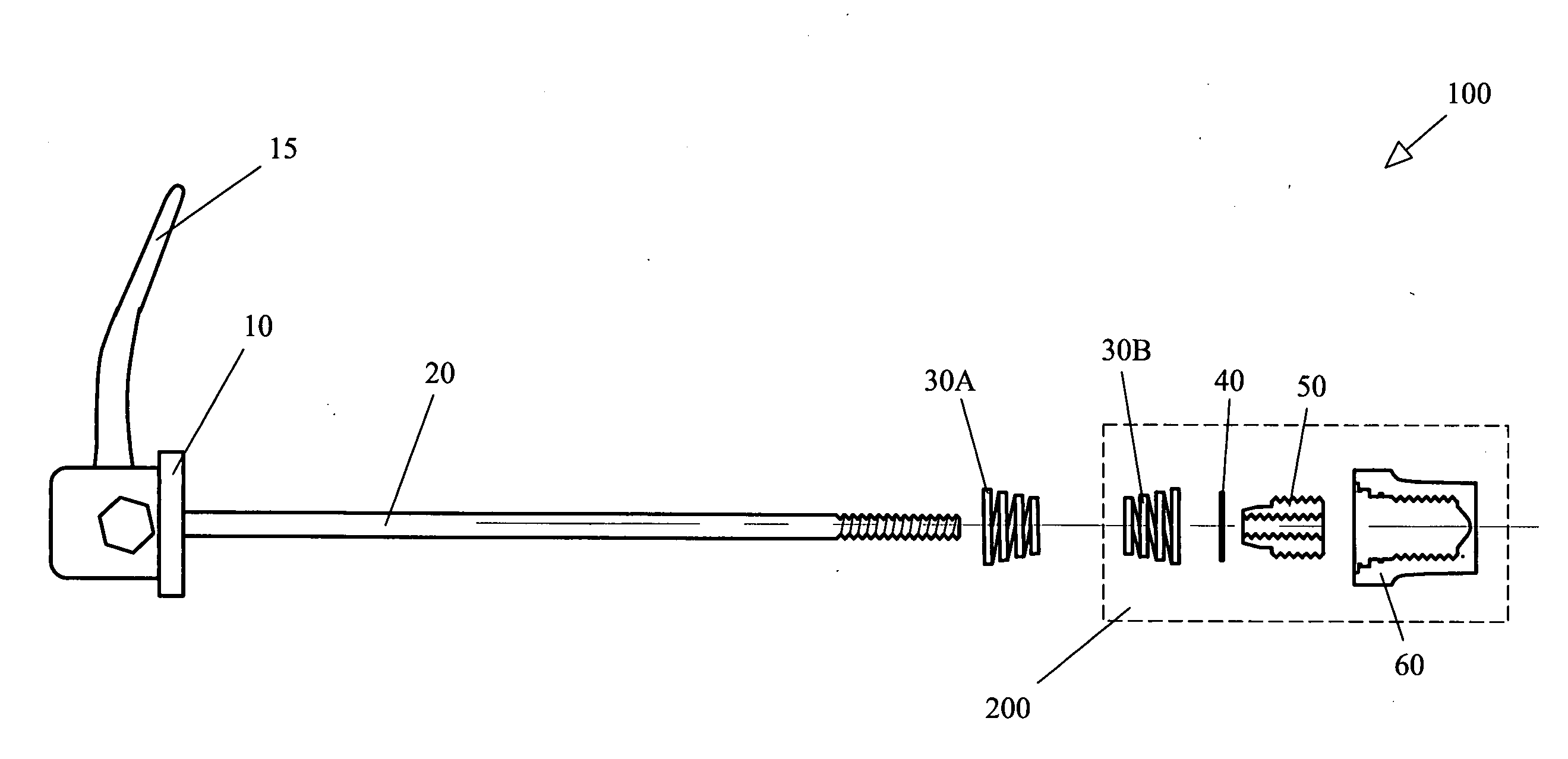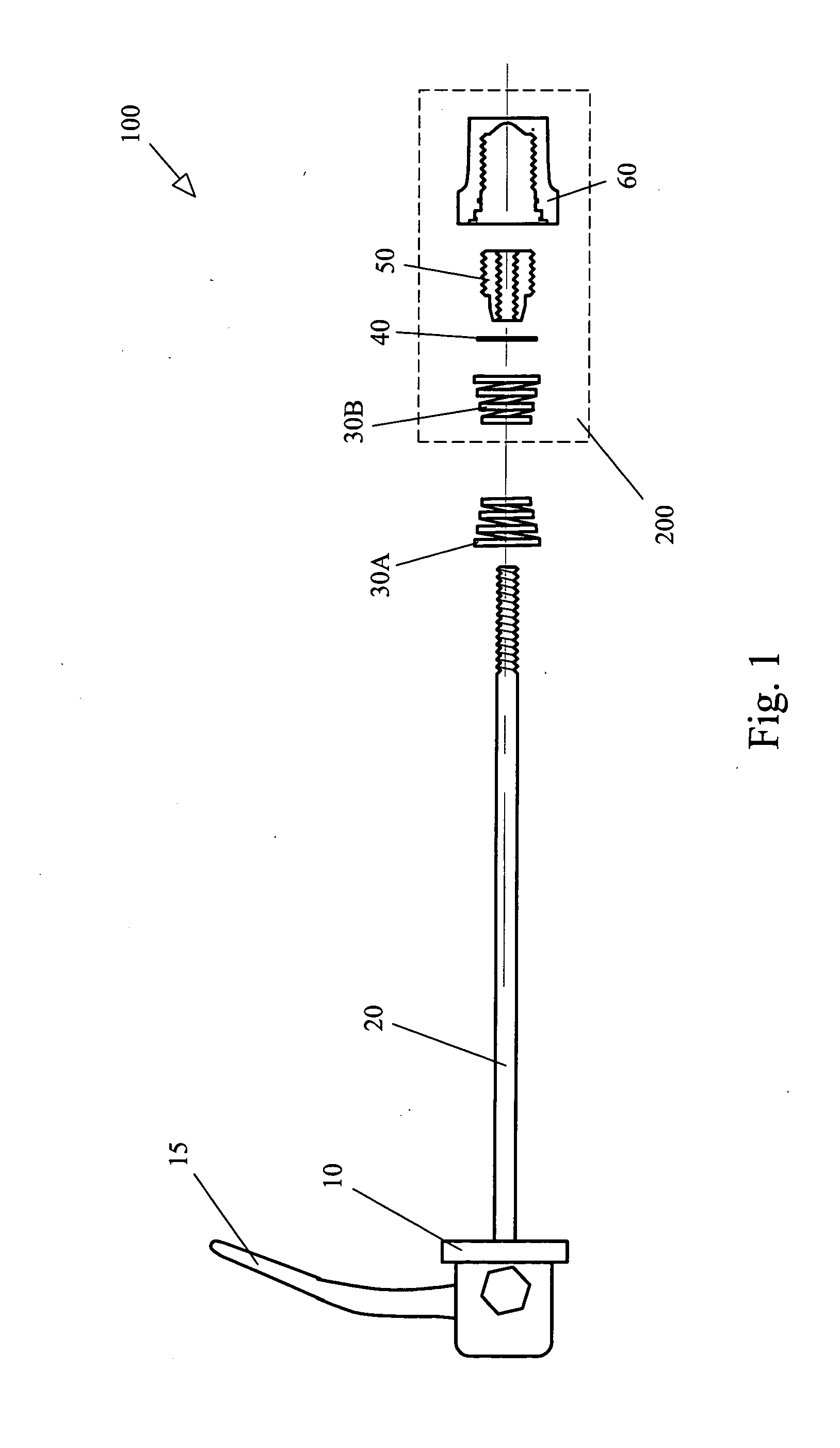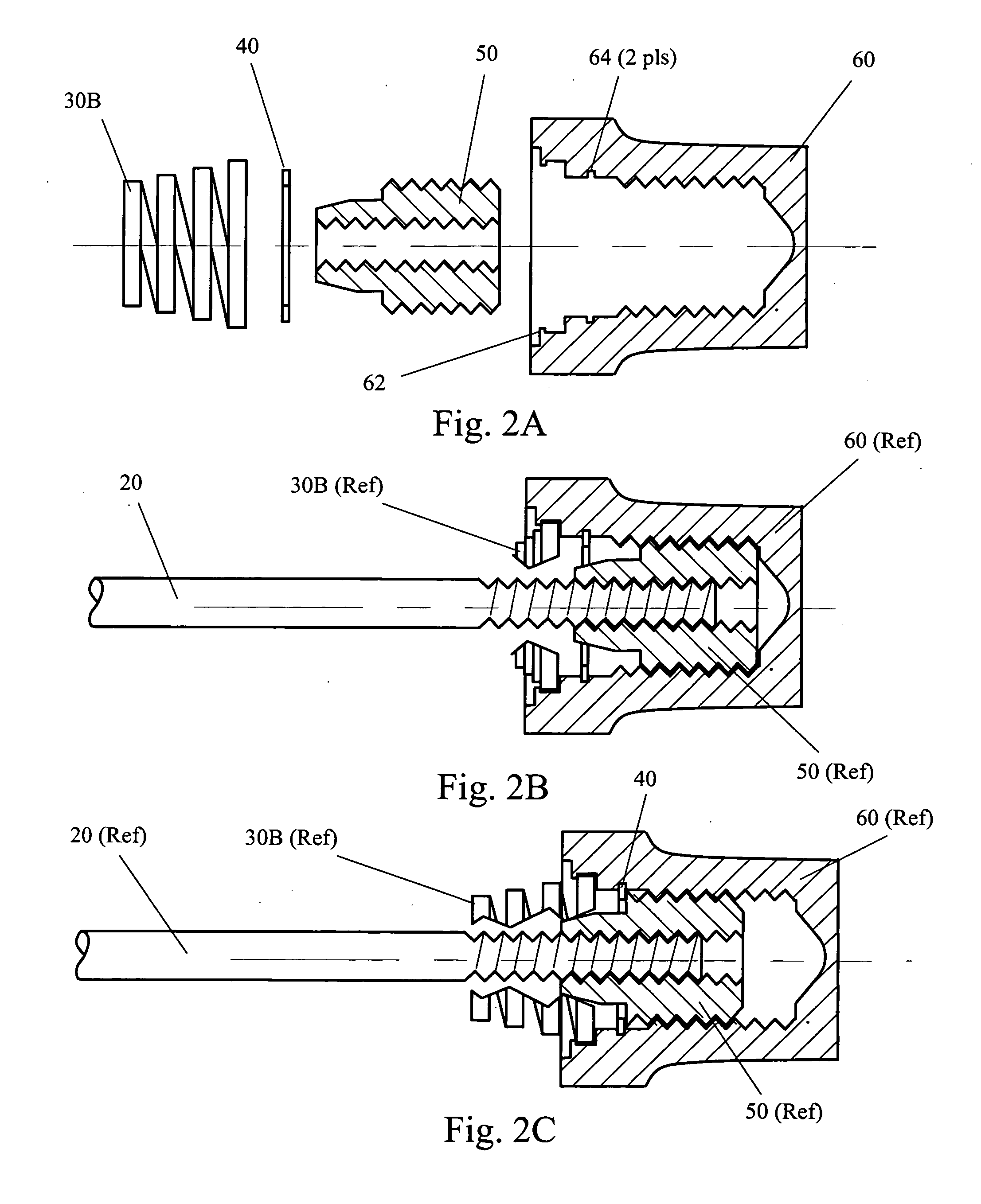Highly efficient fixed gap bicycle axel skewer and method of use
- Summary
- Abstract
- Description
- Claims
- Application Information
AI Technical Summary
Benefits of technology
Problems solved by technology
Method used
Image
Examples
first embodiment
[0021]Turning now to FIG. 2, several views of the details of the present invention are shown. Note that while FIG. 2, as well as FIGS. 3, 4, and 5, discuss the details of the present invention with respect to a driven, or rear wheel, the apparatus is suitable for both driven and non-driven wheels, thus may be used for both front and rear wheel applications.
[0022]Beginning with FIG. 2A, an exploded / sectioned view of the captive nut assembly 200 is shown including captive nut 60, insert 50, stop ring 40 and spring 30B. The outer threads of insert 50 mate with the internal threads of captive nut 60 such that the fit is not tight. As explained further below, this is so that when the rider turns the skewer rod 20, the insert 50 turns with respect to the captive nut 60 while remaining stationary to the insert 50. Stop ring 40 is of the c-ring type and snaps into slots 64 such that when the skewer rod / insert combination is turned, no lateral movement beyond stop ring 40 is permitted. Alter...
second embodiment
[0025]Referring now to FIG. 3, several views of the details of the present invention are shown. Beginning with FIG. 3A, an exploded / sectioned view of the captive nut 60, set screw 70, insert 50, stop ring 40 and spring 30B is shown. The outer threads of insert 50 mate with the internal threads of captive nut 60 such that the fit is not tight. As explained further below, this is so that when the rider turns the skewer rod 20, the insert 50 turns with respect to the captive nut 60 while remaining stationary to the insert 50. Stop ring 40 snaps into slots 64 such that when the skewer rod / insert combination is turned, no lateral movement beyond stop ring 40 is permitted.
[0026]Spring 30B snaps into place over lip 62 such that when lateral movement of the skewer rod 20 occurs, the spring 30B travels with captive nut 60. In this way, when the wheel is removed from the chain stay lugs the spring remains with the captive nut 60.
[0027]Hole 66 is provided in the end of captive nut 60 to allow ...
third embodiment
[0030]Looking now to FIG. 4, several views of the details of a third, preferred embodiment of the present invention are shown. Beginning with FIG. 4A, an exploded / sectioned view of the captive nut 60, insert 50, stop ring 40 and spring 30B is shown. In this third embodiment, the insert 50 is further comprised of outer sleeve 54 and inner barrel 52. Outer sleeve 54 is made of the same material as captive nut 60, typically aluminum. Inner barrel 52 is made of a material such as neoprene. Inner barrel 52 is force fit into outer sleeve 54, together forming insert 50.
[0031]The outer threads of insert 50 mate with the internal threads of captive nut 60 such that the fit is not tight. As explained further below, this is so that when the rider turns the skewer rod 20, the insert 50 turns with respect to the captive nut 60 while remaining stationary to the insert 50. Stop ring 40 snaps into slots 64 such that when the skewer rod / insert combination is turned, no lateral movement beyond stop r...
PUM
 Login to View More
Login to View More Abstract
Description
Claims
Application Information
 Login to View More
Login to View More - R&D
- Intellectual Property
- Life Sciences
- Materials
- Tech Scout
- Unparalleled Data Quality
- Higher Quality Content
- 60% Fewer Hallucinations
Browse by: Latest US Patents, China's latest patents, Technical Efficacy Thesaurus, Application Domain, Technology Topic, Popular Technical Reports.
© 2025 PatSnap. All rights reserved.Legal|Privacy policy|Modern Slavery Act Transparency Statement|Sitemap|About US| Contact US: help@patsnap.com



